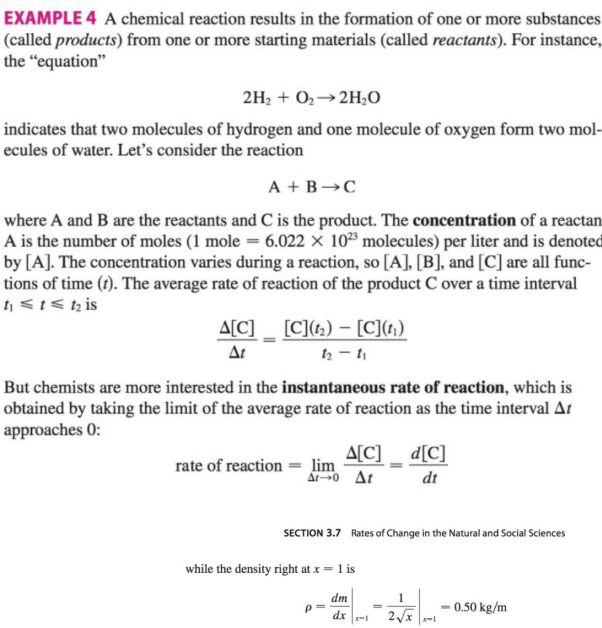
Concept explainers
If, in Example 4, one molecule of the product C is formed from one molecule of the reactant A and one molecule of the reactant B, and the initial concentrations of A and B have a common value [A] = [B] = a moles/ L, then
[C] = a2kt/(akt + 1)
where k is a constant.
(a) Find the rate of reaction at time t.
(b) Show that if x = [C], then
c) What happens to the concentration as t → ∞?
(d) What happens to the rate of reaction as t →4 ∞?
(e) What do the results of parts (c) and (d) mean in practical terms?
EXAMPLE 4

Trending nowThis is a popular solution!

Chapter 3 Solutions
CALCULUS,EARLY TRANSCENDENTALS-ACCESS
- please dont use chat gptarrow_forwardQuestion Given the graph of f(z) below, identify the graph of f'(z). Select the correct answer below: -7-6-5-4-3-2 1 2 3 4 5 6 + 123. -7-6-5-4-3 12 + 4-3-2-1 1arrow_forwardFind this expression in frequency domain in a expression y(t), in time, that is.arrow_forward
- please dont use chat gptarrow_forwardQuestion Given the graph of f(z) below, find the graph of the derivative of f(z). Select the correct answer below: ° 7-6-5-4-3 123 ° ° 2 -7-6-5-4-3- 123 -° 2-4 -°- °- -7-6-5-4-3-2-1 1 5 +arrow_forwardWhich of the functions shown below is differentiable at = 0? Select the correct answer below: -7-6-5-4- -6-5-4-3-21, -7-6-5-4-3-2 -7-6-5-4-3-2-1 2 4 5 6 -1arrow_forward
- Algebra & Trigonometry with Analytic GeometryAlgebraISBN:9781133382119Author:SwokowskiPublisher:Cengage
 Linear Algebra: A Modern IntroductionAlgebraISBN:9781285463247Author:David PoolePublisher:Cengage Learning
Linear Algebra: A Modern IntroductionAlgebraISBN:9781285463247Author:David PoolePublisher:Cengage Learning


